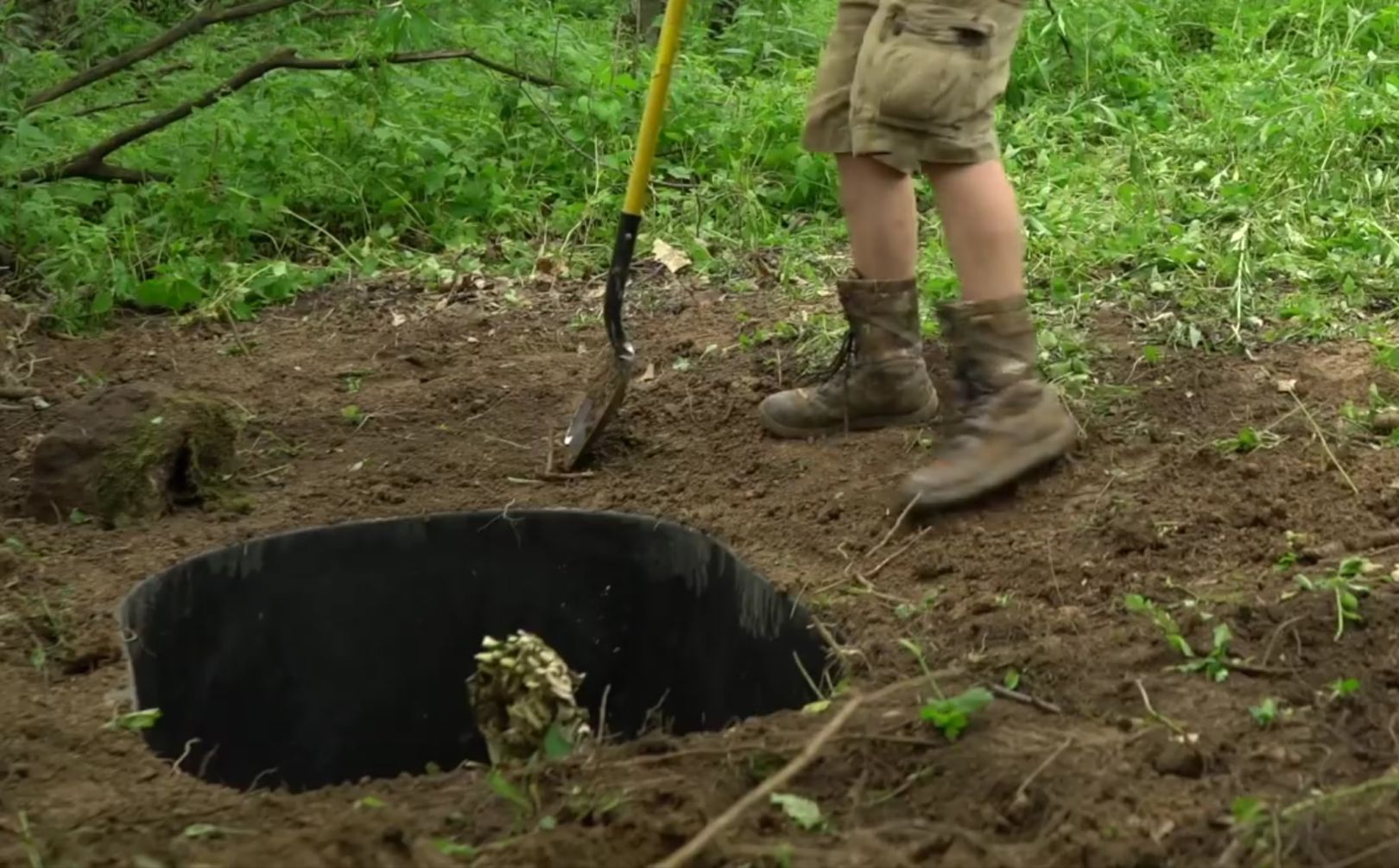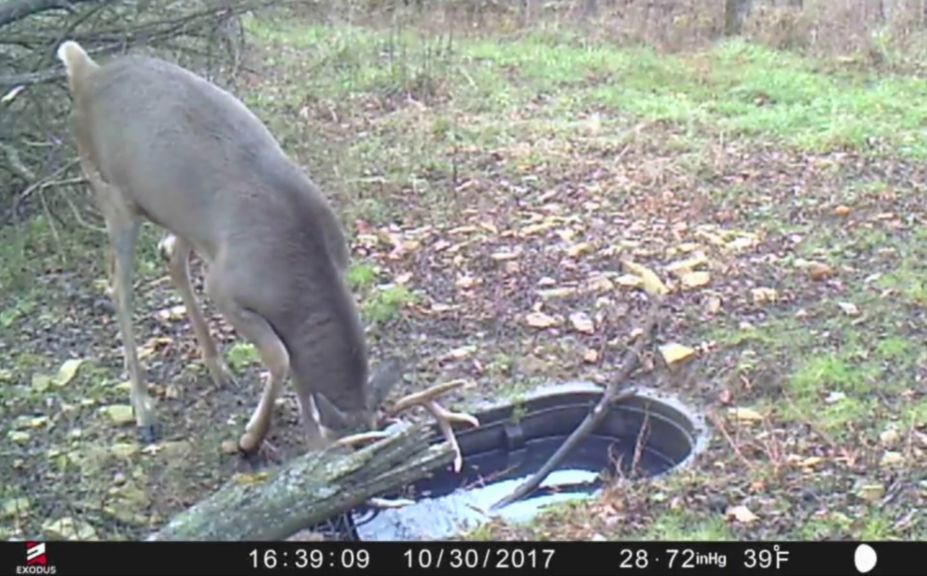
Small waterholes, leaves, sticks and a lack of critter escape opportunities can each destroy or diminish all of your hard work for establishing a quality deer waterhole. Under the right circumstances, a waterhole for whitetails greatly improves your ability to define daily deer movements on your land. There are some strategies for not only maintaining your waterholes, but for making sure that your waterholes continue to attract whitetails to each location every year, including: Size of waterhole, cleaning your waterhole, keeping critters out, EHD proofing and making sure that your waterholes are hidden below the level of the ground.
*Waterholes are great, until they run out of water. Make sure to keep your deer Waterholes Full!
Waterhole Tips and Maintenance
While it can take a long time and a lot of hard work to properly dig a waterhole into the soil, once established, a waterhole is very low maintenance and can deliver an extremely high level of power to defined daily deer movements. Always remember to locate a waterhole between dry bedding areas and an afternoon food source or between dry bedding areas, and directly on the food source or in the bedding area. Here are 5 important tips for you to remember:
1. Size of Deer Waterhole
After 15 years of using whitetail waterholes, I learned the hard way that you need to use at a minimum, a 70-100 gallon tank. I personally recommend a 100 to 110 gallon tank for the perfect balance between too large to dig in and too small to hold water long enough to effectively establish daily patterns of use.
2. Cleaning Your Waterhole
Once a year (typically in the Spring) I encourage you to rake out your waterholes, to remove the sticks and leaves that are rotting inside the tank. If heavy Spring rains are present, then you typically will not have to refill your waterholes and at most, flushing your waterholes out once a year can be appropriate.
3. Critter Escape
Don't forget a log or stout branch placed inside your waterhole and over the lip of your waterhole, to allow small rodents to escape your deer waterhole.
4. EHD Proofing Your Waterhole
The midge that causes EHD, grows within the drying and cracking ground around water sources. By keeping your water inside the container I believe that you can significantly decreases the opportunity for EHD to take hold, but by planting the outside of your waterhole in lawn grass and clover combos, you can further decrease the risk.
5. Waterholes Installed Below Ground Level
After personally observing deer avoiding or being spooked by waterhole containers placed above ground level, I haven't been tempted to install a waterhole above ground level for several years. Waterholes should blend into their surroundings and appear very non-intrusive to the local whitetail population - in particular to a wise old mature buck!

*Here are the basic steps to building an Easy Whitetail Waterhole.
Conclusion
Since the early 2000s I have enjoyed using tank waterholes! Along the way I have learned a whole lot but I feel that I still have a whole lot to learn. However, the one thing that has been completely strengthened along the way - waterholes for deer can be extremely powerful in the correct setup! Waterholes have been great to experience, write about and used to highly define deer movements for many years, and I hope my whitetail waterhole journey has a few more decades left. If you follow the basic 5 waterhole tips of ground level installation, EHD proofing, critter escape, cleaning and appropriate choice of size, you are well on your way to making sure that you can tap into the power of using water for whitetails!